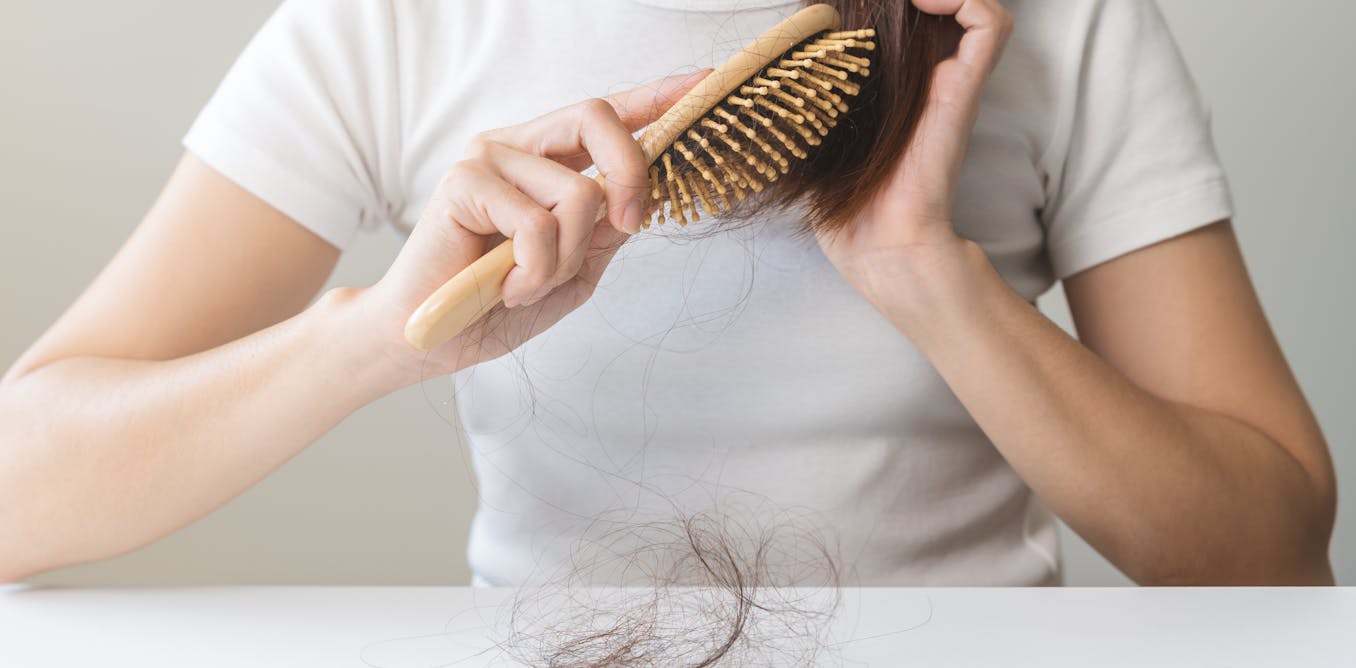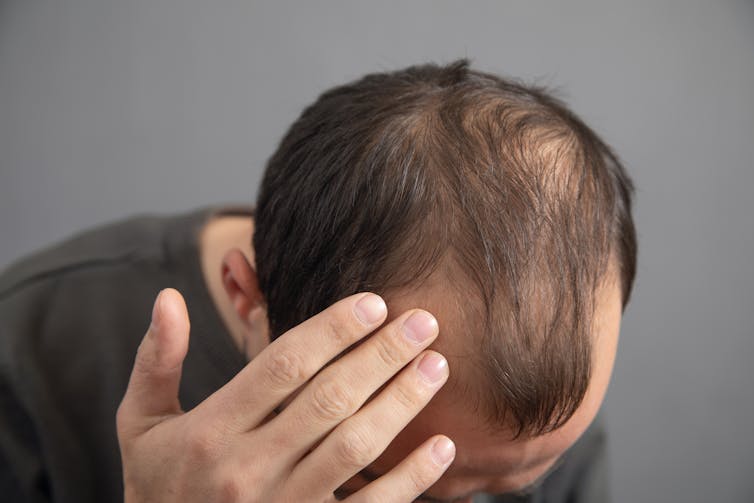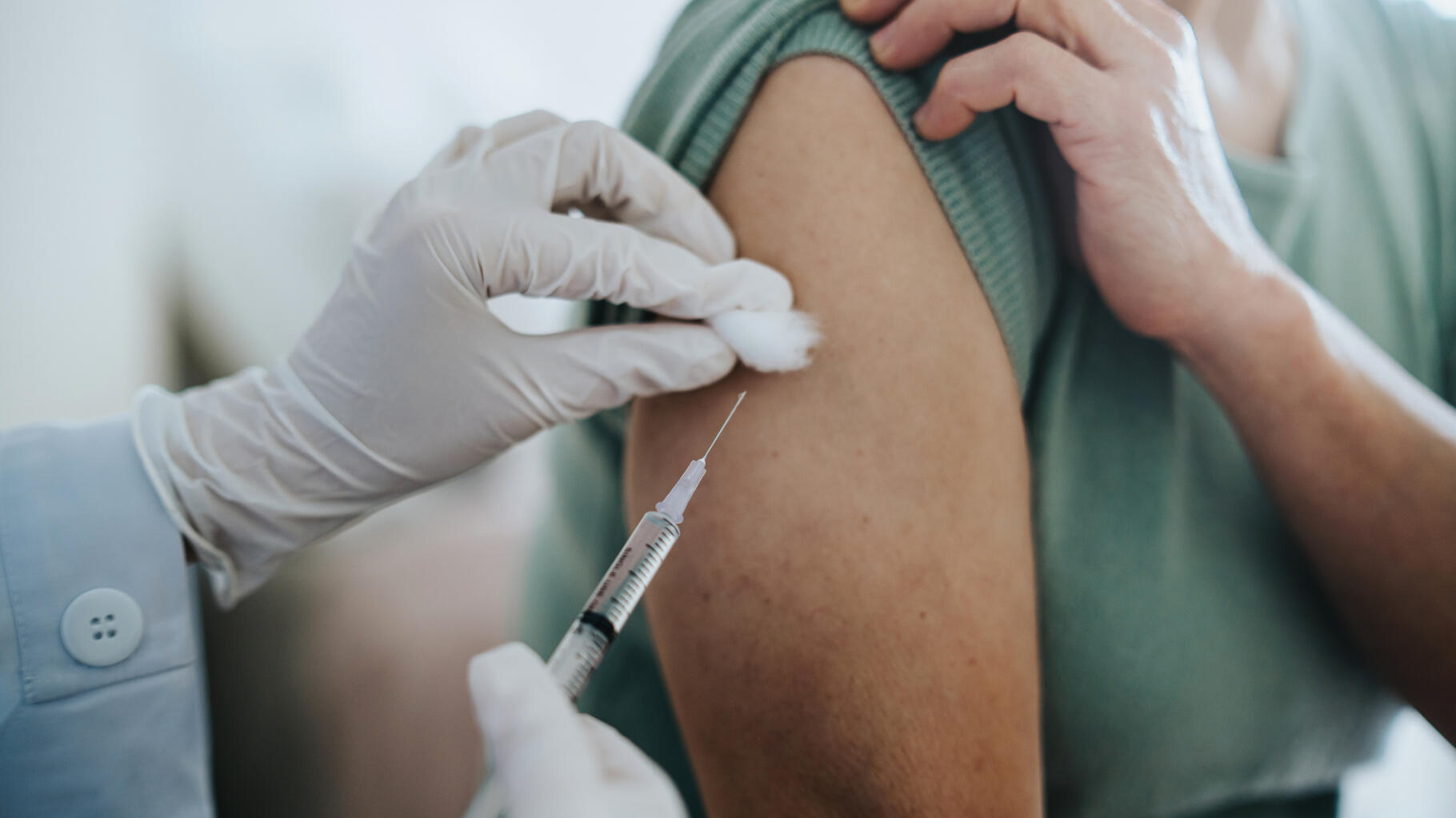What your hair can teach you about your health

Our hair says a lot. The way we cut, style and color it often represents who we are.
But hair is not limited to its aesthetic role. They also perform several important functions: they prevent, for example, heat loss through the skin or (in the case of our eyebrows) sweat from flowing into our eyes.
Hair can also be a reflection of what is happening inside our body. Many diseases can change the quality and appearance of our hair. Paying attention to their appearance can give us clues about our health.
Hair cycle
The follicles that produce and nourish hair are one of the smallest organs in our body. Hair can only grow where there are follicles.
Hair growth is a complex process. Each tiny follicle goes through different cyclical phases. The first is the phase of active hair growth (the “anagen” phase), before growth stops (the “catagen” phase). This phase then progresses to hair loss or follicle fall (“telogen” phase).
Many factors – from our genetics, to our hormones, to our age – can affect these follicles and their growth.
Extra hair
Hypertrichosis is a condition in which excess hair grows all over the body. In most cases, it is a reaction to taking a new drug, such as phenytoin, used to treat epilepsy. But it can also be caused by diseases like anorexia and HIV.
(Health insurance invites medical examination in the event of normal hypertrichosis or excessive hair growth in women, Editor’s note).
Certain conditions cause hair to grow where it shouldn’t. In newborns, the presence of tufts of hair near the base of the spine may indicate spina bifida occulta. This occurs when the spinal cord beneath the spine has not formed properly, leaving the fragile spine covered with only skin.
Why and how these conditions and their ability to trigger hypertrichosis are poorly understood.
Hirsutism is another condition characterized by excessive hair growth, but usually in a male pattern. (In other words, the hair is located in places on the body where it normally is in men and not in women, editor’s note) : On face, lips, chest and hands. This phenomenon is due to androgen hormones, i.e. testosterone, which at high levels, promote hair growth in these areas. This phenomenon can be seen in polycystic ovary syndrome.
(Polycystic ovary syndrome, or PCOS, is the most common hormonal disorder in women of reproductive age and a leading cause of female infertility, editor’s note).
Hair loss
Hair may also begin to fall out in abnormal amounts, becoming thin or absent on certain parts of the body. The medical term for hair loss is alopecia. It can be localized or generalized. The causes of alopecia are multiple and include fungal infections (Editor’s note, due to fungus), anemia due to iron deficiency, low thyroid hormone levels, and medications (including chemotherapy).
Read more: Deaths from fungal infections have doubled in ten years

Andranik Hakobyan/Shutterstock
Age, gender and genetics are also to blame. Male pattern baldness occurs on the head hair and crown. It is influenced by the hormone testosterone which shortens the growth phase of the hair and makes it thinner. Most men with male pattern baldness start losing hair around the age of 20-25.
(Over 85,000 readers trust The Conversation newsletters to better understand the world’s top issues.. Subscribe Today)
On the other hand, female pattern baldness usually affects the frontal hairline and causes thinning rather than hair loss. The role of testosterone in women is more questionable. But there is a hormonal reason because hair loss is more common around and after menopause.
Hair pulling can also cause hair loss. Tight hairstyles can cause traction on the follicle and loss of hair integrity. Some people may habitually pull or pull their hair. It is called trichotillomania.
Treatment of hair problems
It may be enough to treat the underlying condition to help the hair grow back. Treatment with medication based on the active ingredient minoxidil may also be considered. The drug was initially developed to treat high blood pressure, but has also been seen to promote hair regrowth. Its action may be due to direct effect on hair follicles or improvement of blood circulation in the scalp. These uncertainties may explain why some patients see their condition improve and others do not.

Every Tuesday, our newsletter “And above all health!” » Gives you the keys to make the best decisions for your health (sleep, diet, psychology, physical activity, new treatments, etc.).
Subscribe today.
Hair transplantation is also possible. This involves replacing the hair crop in the balding areas. We can proceed in two ways: we either transplant several small grafts through the “hole” or through a large strip of skin. Grafts are taken from the hairy skin of the patient’s body – an example of autograft.
Sometimes hair is found on certain visible areas of the body where its presence is not desirable. This is a specific treatment to prevent overgrowth. In addition to traditional methods of hair removal, birth control pills and other drugs that control the hormonal influence on hair (such as finasteride) may be considered in cases where there is a hormonal cause (such as PCOS).
(In France, the National Medicines Safety Agency or ANSM warns against adverse effects, especially psychological (anxiety, depression, possibility of leading to suicide) that may be associated with taking finasteride 1 mg. Genital organs of boys, women who are pregnant or “Those who may be pregnant should never handle broken or crushed finasteride tablets”, warns the ANSM services. Finally, the agency invites people taking finasteride to systematically consult doctors, editor’s note ).
Test your own hair
To get a better idea of the health of your hair, you can do a simple test yourself at home, known as a hair pull.
Select a clump of 30 to 50 hairs (a small clump) and run your fingers from the base of the hair to the scalp, all the way to the ends. It is not necessary to pull hard, gentle pulling is enough to remove the falling hair. See how much hair you have pulled.
Usually, only one or two hairs are pulled, but this can vary from person to person. In addition to ten hairs, your scalp is likely to lose more hair than usual. This could indicate alopecia, but seeing a dermatologist for a more detailed examination can help you determine if your hair loss is a sign of a more serious problem.
Changes in your hair are not related to age or how you style it. There are many conditions that require attention to hair growth or loss. Note any changes, whether they are noted by you or your hairdresser.





